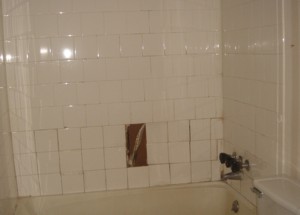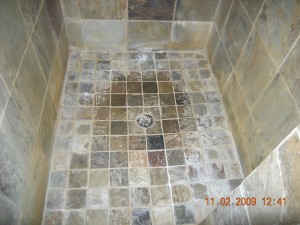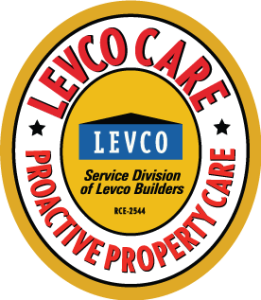Estimated reading time: 3 minutes, 0 seconds
We are starting to see a serious problem as a result of the building boom of the late 80’s and 90’s. Turns out there is no building code restricting the use of water resistant drywall as tile backer for tile.
Even today some remodelers and handyman services are sneaking it in to save a few bucks. Best practices dictate using a cementatious or otherwise waterproof product that won’t expand or disintegrate with water contact.

What happens is that tile is set on the “Green Board” Sheetrock because it is water resistant. Over time, the grout fails from poor sealing, failed caulking, missed grouting,expansion and contraction of dissimilar materials. Then before you know it the wall gets weak and while washing a pet in the shower ( This really happened) you lean against the wall and your hand goes through.
This is a total gut and rebuild project. Fixing it half way will cost more in the long run. Green Board Sheetrock is no longer allowed in wall shower and tub locations in the 2009 IRC we must use one of a number of other products REF: R702.4.2
Green Board is still useful for say a lid in a shower just not for tile setting.
At Levco we always install tile on a cementitious backer board and seal the cracks with Thinset. This ensures our tile showers won’t be susceptible to failure. For “Mud Set” shower pans we use a time proven custom shower pan liner procedure that involves multiple products and steps.
We offer standard grout and epoxy grout. The epoxy grout is a little more expensive but a great option for those that hate cleaning.
We turn our projects over sealed with the recommendation that regular sealing occur. Different sealers are recommended at different intervals depending upon upon the tile or stone, the grout type, how often the shower is used and cleaned.

Natural Stone: When sealed, does fine. It is relatively soft, porous, and is susceptible to failure without regular care. Flaking, discoloration, and disintegration are not uncommon. This one suffered from un-rinsed toothpaste and shampoo. Skin oils may have protected the center.
Humidity: Showers and bathrooms last best when the humidity is evacuated completely. This is a “Green” indoor air quality issue that will prevent shower failures. As long as there is a window (which opens) a fan is not required. However, I insist upon adding a fan. I also include a electronic fan timer which saves energy.
Drying the shower to prevent mildew from growing in the grout. Once a seal is gone and soap enters the grout it provides the food for growth. A synthetic shammy from an auto parts store cut in half works great. It also helps to prevent water spots from appearing.

Water Spots: Once you have them or a haze, I found a great product called Amaz Clean & Green. I bought it at Atkinson’s Mirror and Glass in Boise for $10.00 it is a non toxic paste that you apply and then wipe off. It removes the spots and haze relatively effortlessly.
Case Study: This is a shower that looked fine but there was a suspicion of water leaking because of a spongy floor. There was a shower door placed on a stacked 3-2″x4″ curb. Chances are some of the screws allowed water to get into the wood along with the poor seal of the door.


Leave a Reply